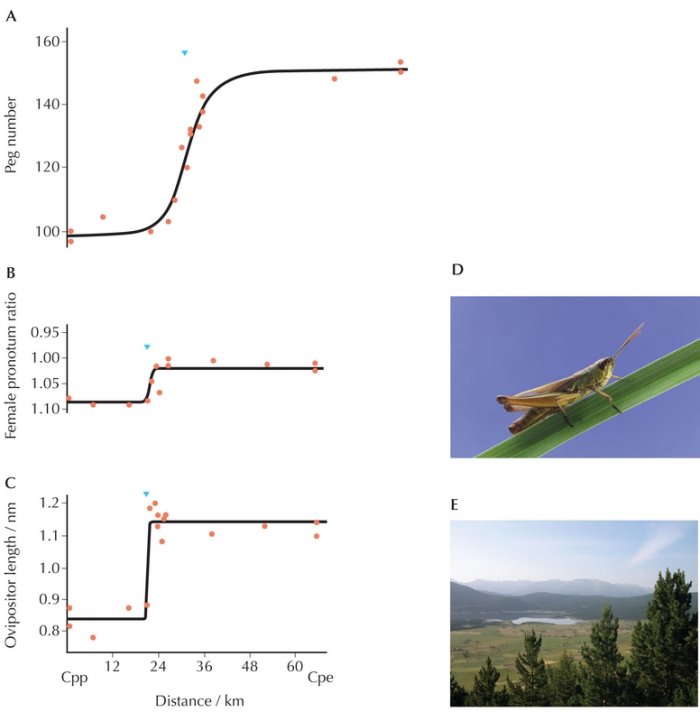Cline Widths Reflect the Strength of Selection

Figure WN19.2.
Cline widths reflect the strength of selection. The meadow grasshopper, Chorthippus parallelus (D), contains two subspecies, C.p. parallelus and C.p. erythropus, which meet at Col de la Quillane in the Pyrenees (E). The rate of dispersal σ is 30 m in a generation (p. 442). Therefore, simple mixing of the alternative alleles over the 9000 years since the subspecies met after the last glaciation is expected to produce clines of width  = =  m ~ 7 km. There is a broad transition in the number of pegs on the males’ legs, which spans about 8 km (A). This is consistent with simple mixing. In contrast, clines for female pronotum ratio (B) and ovipositor length (C) are much narrower (<2 km). Some kind of selection must maintain these steep clines, although it need not be very strong: s = 0.1% on the underlying genes would maintain a cline of around w = 3 m ~ 7 km. There is a broad transition in the number of pegs on the males’ legs, which spans about 8 km (A). This is consistent with simple mixing. In contrast, clines for female pronotum ratio (B) and ovipositor length (C) are much narrower (<2 km). Some kind of selection must maintain these steep clines, although it need not be very strong: s = 0.1% on the underlying genes would maintain a cline of around w = 3  m ~ 2 km. (A–C, Redrawn from Fig. 3 in Butlin et al. 1991. D,E, Courtesy of Roger Butlin, Sheffield University.) m ~ 2 km. (A–C, Redrawn from Fig. 3 in Butlin et al. 1991. D,E, Courtesy of Roger Butlin, Sheffield University.)
|

